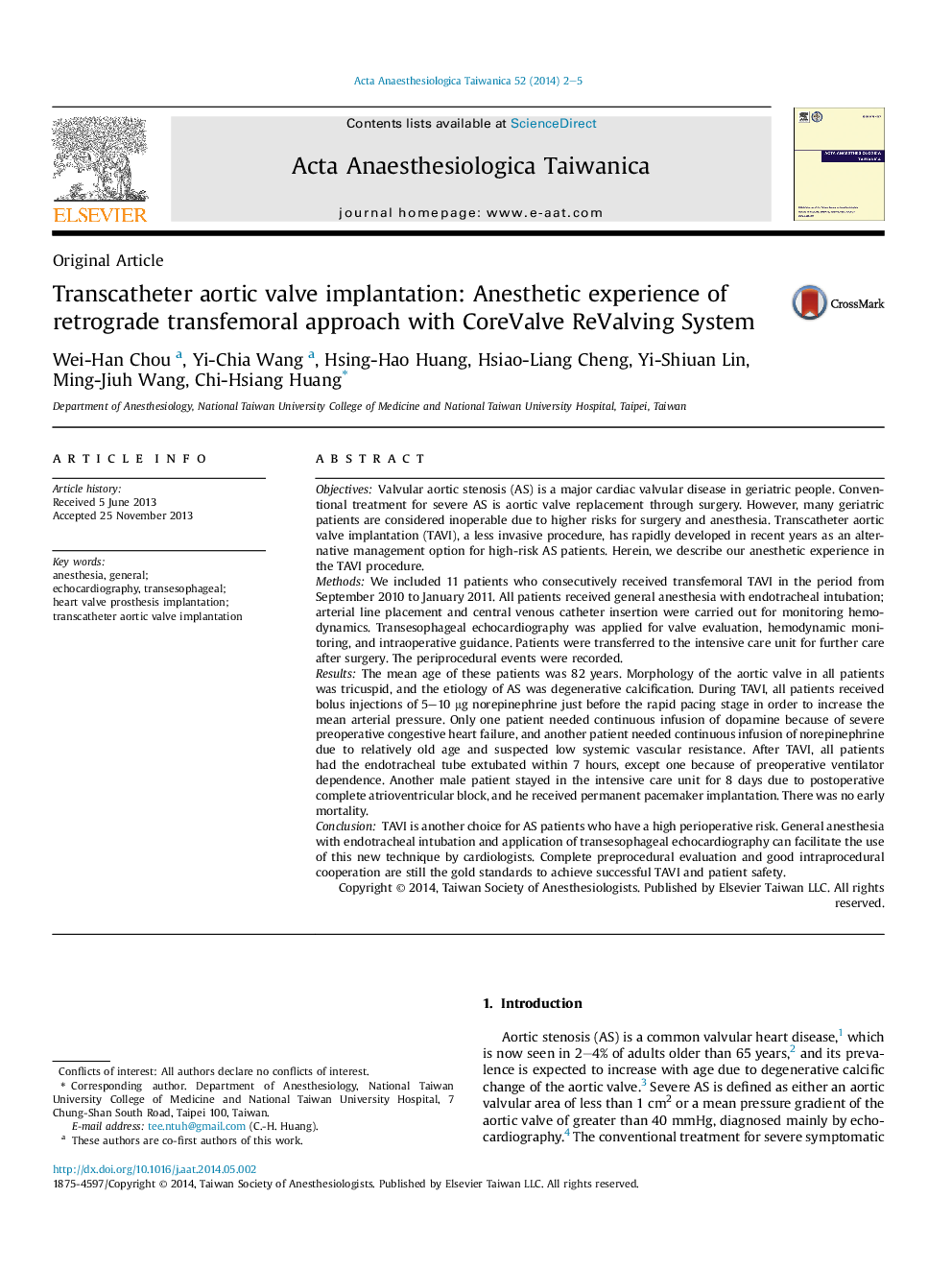| Article ID | Journal | Published Year | Pages | File Type |
|---|---|---|---|---|
| 2741440 | Acta Anaesthesiologica Taiwanica | 2014 | 4 Pages |
ObjectivesValvular aortic stenosis (AS) is a major cardiac valvular disease in geriatric people. Conventional treatment for severe AS is aortic valve replacement through surgery. However, many geriatric patients are considered inoperable due to higher risks for surgery and anesthesia. Transcatheter aortic valve implantation (TAVI), a less invasive procedure, has rapidly developed in recent years as an alternative management option for high-risk AS patients. Herein, we describe our anesthetic experience in the TAVI procedure.MethodsWe included 11 patients who consecutively received transfemoral TAVI in the period from September 2010 to January 2011. All patients received general anesthesia with endotracheal intubation; arterial line placement and central venous catheter insertion were carried out for monitoring hemodynamics. Transesophageal echocardiography was applied for valve evaluation, hemodynamic monitoring, and intraoperative guidance. Patients were transferred to the intensive care unit for further care after surgery. The periprocedural events were recorded.ResultsThe mean age of these patients was 82 years. Morphology of the aortic valve in all patients was tricuspid, and the etiology of AS was degenerative calcification. During TAVI, all patients received bolus injections of 5–10 μg norepinephrine just before the rapid pacing stage in order to increase the mean arterial pressure. Only one patient needed continuous infusion of dopamine because of severe preoperative congestive heart failure, and another patient needed continuous infusion of norepinephrine due to relatively old age and suspected low systemic vascular resistance. After TAVI, all patients had the endotracheal tube extubated within 7 hours, except one because of preoperative ventilator dependence. Another male patient stayed in the intensive care unit for 8 days due to postoperative complete atrioventricular block, and he received permanent pacemaker implantation. There was no early mortality.ConclusionTAVI is another choice for AS patients who have a high perioperative risk. General anesthesia with endotracheal intubation and application of transesophageal echocardiography can facilitate the use of this new technique by cardiologists. Complete preprocedural evaluation and good intraprocedural cooperation are still the gold standards to achieve successful TAVI and patient safety.
